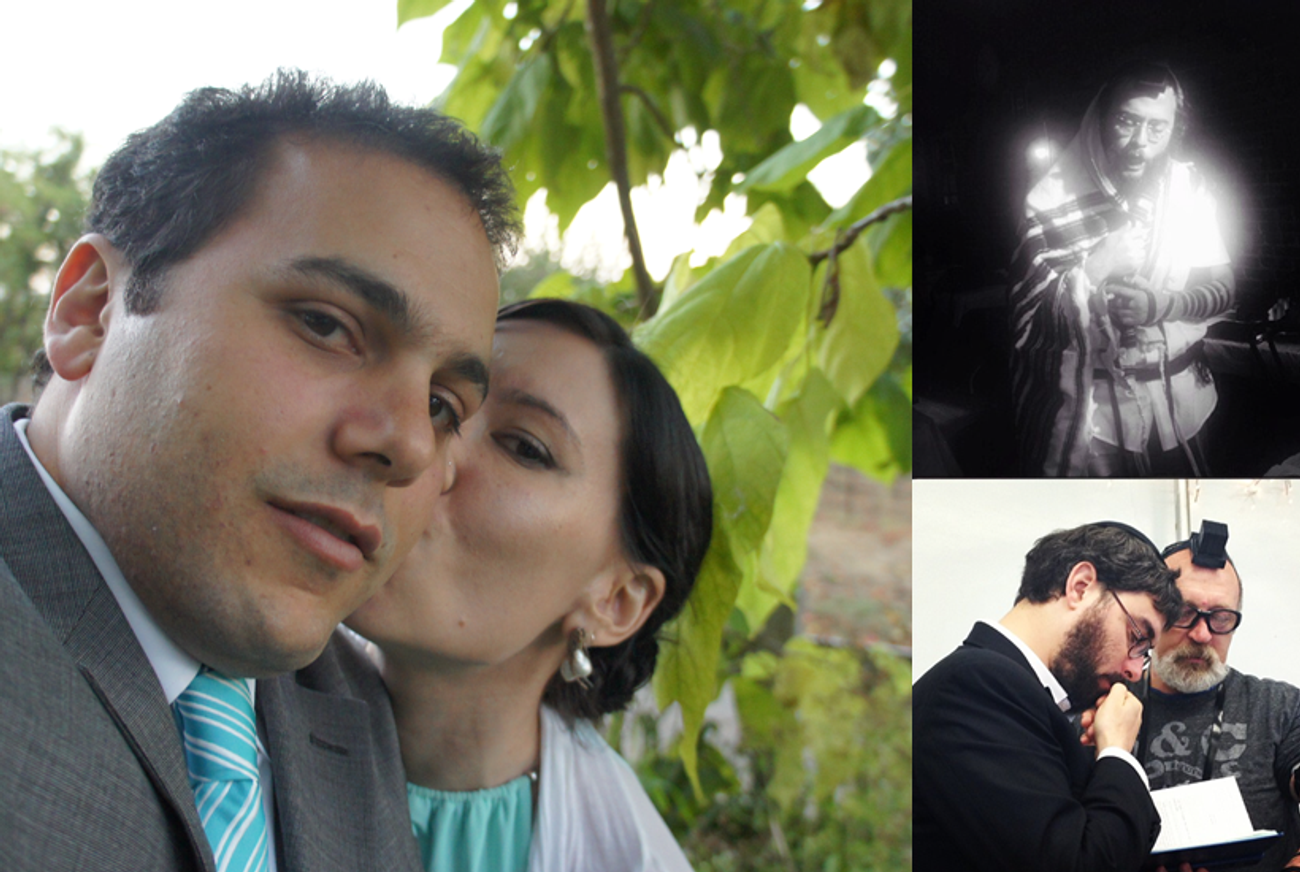My Journey to the New Jerusalem
Forty percent of Jewish millennials may be unaffiliated. That doesn’t mean they’re not creating a new kind of Jewish world.




This is a preview of a longer essay about one woman’s search for a new kind of Jewish community. The article was written and edited in collaboration with The Big Roundtable. Click here for the full story.
My husband Tal and I number among the worrying subset of American Jewry—about 40 percent of Jewish millennials, according to last year’s apoplexy-inducing Pew Study—who have no apparent place in the wider Jewish world. We are the infuriatingly unaffiliated, not by choice but because institutional Judaism has no place for us.
In our case, we both attend and are technically members of our local shul while at the same time not identifying with its denomination (Modern Orthodox) or with any denomination, for that matter. The fact that we are members and pay dues in spite of our feeling that the label doesn’t fit us to me belies everything the detractors are saying. We want to belong, to the point of schizophrenia, but as soon as we try to stake a piece of ground it shifts from under our feet.
Meanwhile, the study and its arbiters tend to suggest that it’s not institutions but Jews like us who are disconnected, unconcerned with the fate of our faith, or our culture, or is it our ethnicity? We’re too distracted, they insist, too demanding, too ADHD. We’re too unsettled for membership and too selfish for dues … in a word, we’re not serious enough for American Judaism.
Let’s suppose for a moment that’s true. Where, then, does it leave us, the ungrateful, anti-establishment 40-percenters?
There’s a new popular moniker, the cultural Jew. But how can we be culturally Jewish when our Judaism is not one culture but many, both secular and religious, Sephardi and Ashkenazi, Israeli and American, and all the other things our tribe of friends and family also are: Polish-Persian, Yekke-Jamaican, Yemenite-Moroccan, Russian, Uzbek, Ethiopian, Argentine, South African, French, and Brazilian, gay and straight, atheist and believer, ex-Hasidic and baal teshuva? Oh, and the 10 percent of us whose Judaism was stripped away by the Soviet Union?
Let them eat bagels.
Let’s say we repent, rejoin, to do teshuva. What then awaits us inside those air-conditioned halls?
What divine mysteries can Reform Judaism reveal to an 8-year-old girl in the throes of a deathbed religious epiphany? What does Conservative’s showy Yom Ha’Shoah memorials and AIPAC boosterism have to say to a bar mitzvah boy whose grandparents survived Auschwitz to see their only son sent to the front during the Yom Kippur War? How can the unhappy product of either take sides in an Orthodox debate over intricacies of halakhah they neither care for nor comprehend? What, precisely, do you expect us to cleave to?
The truth is, being asked to choose between Reform, Conservative, and Orthodox is like being asked whether you want Pepsi, Coke, or black coffee from the 40-cup urn.
What we want are cold brew and single origin pour-over—better yet, a chemistry set and a Soda Stream, the ingredients to concoct something new, something ours, something real.
Real is a niggun that draws up from a single voice in the congregation and spins like wool into yarn, knitting 70 people into a single, spontaneous melody as the Torah is replaced in the ark. Real is dropping everything to toast a l’chaim at a friend’s engagement, or show up for a stranger’s funeral. It’s Havdalah on YouTube and Purim on Instagram, tehillim for iPhone, Mikvah.org. Real means there’s Crown Royal in the instant coffee Shabbat morning, and hair in the matzo-ball soup.
By the time we moved to Crown Heights just after our wedding in 2011, both Tal and I wanted desperately to get real. We’d been close with our local Chabad in California but felt like they were holding their breath until we became baale teshuva. The Conservative and Modern Orthodox synagogues we’d tried felt old, like so old, and the youthful alternative minyan was overrun with what my husband refers to disdainfully as “camp people.” (The sort who, while my ex-Hasid friend is having a deep moment with the scroll she was never allowed to hold as a girl, shoves past drunkenly shrieking, “I totally love the Torah!”)
It was here in New York that we stumbled into Jews like us, and not only hipsters and young professionals who’d been raised in the liberal denominations but Orthodox and Hasidic Jews who appeared, on the surface at least, to be chasing the same phantom.
Forty percent cannot be an outlier. Forty percent means something is lost, something is missing, and nearly half of us are searching for it.
A few months ago, I confessed to a fellow seeker I thought we might actually have kind of found something here, that if one friend’s sale went through and another met the right man, our tribe might actually have somewhere to belong.
Our landsmen called it The New Jerusalem.
Read the full story here.
Sonja Sharp is a novelist and reporter of crime and culture in New York City. She teaches news writing at the Columbia University Graduate School of Journalism, and her stories have appeared in the Wall Street Journal, VICE, the New York Times, The New York Daily News, Mother Jones, and elsewhere.